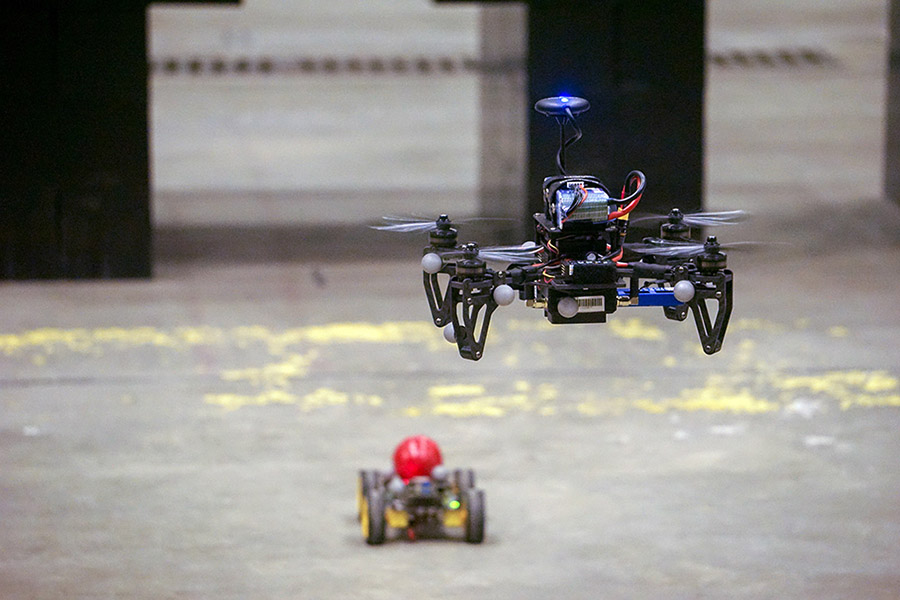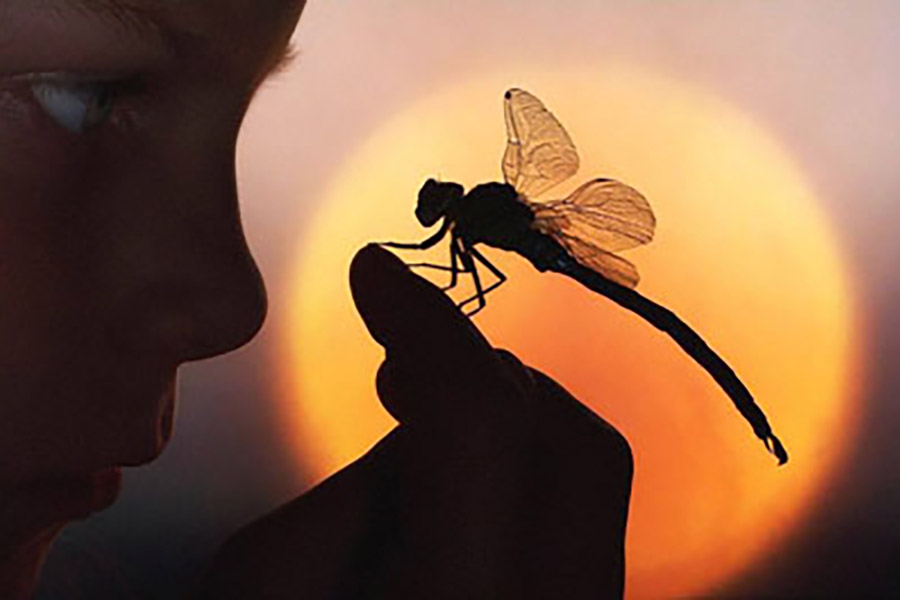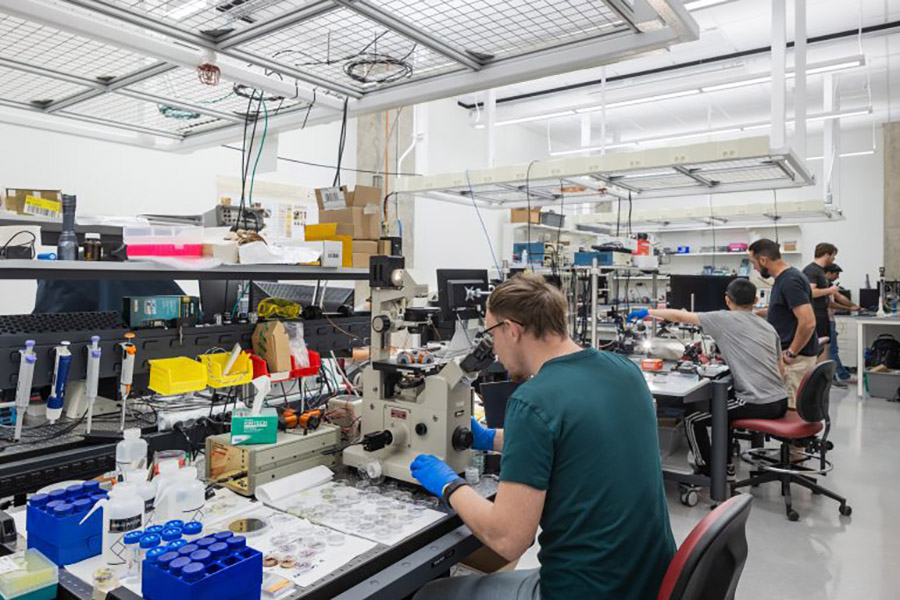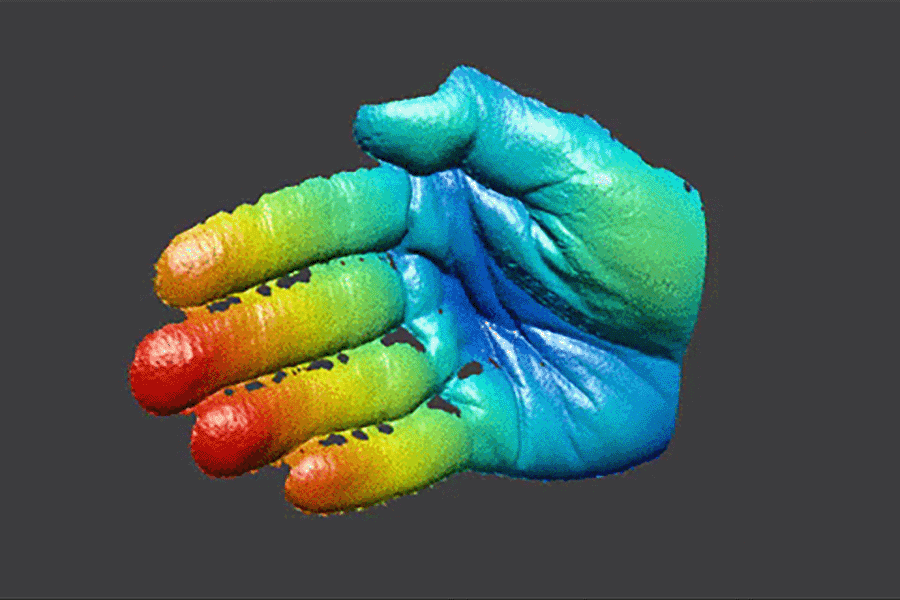Multi-Agent Formation Control
Tag:Multi-Agent Systems

The Purdue UAS Research and Test Facility (PURT)
PI: James Goppert
The Purdue UAS Research and Test Facility (PURT) can do what others can't. Our motion-capture system is unmatched in its size, and is one hundred times more accurate than GPS. Our 600,000 cubic feet of volume allows us to fly many types of drones, including fixed-wing, in a space protected from weather. Our camera system gives Purdue researchers unmatched precision to develop the unmanned aerial systems essential to the future of mobility.

Autonomous & Intelligent Multi-agent Systems Lab (AIMS)
PI: Shaoshuai Mou
Autonomous & Intelligent Multi-agent Systems (AIMS) Lab aims to investigate autonomy and intelligence for networked systems consisting of multiple unmanned mobile agents, through combination of theories in control, networks, optimizations and artificial intelligence. We are interested in both theoretical research towards novel control algorithms for coordination among a large-network of mobile agents and experimental implementations for improving autonomy and intelligence of the overall networked system.

Assistive Robotics Technology Lab (ART)
PI: C. S. George Lee
Assistive Robotics Technology Lab (ARTLab), a multidisciplinary robotics research laboratory, focuses on research and development of enabling technologies for assistive robots for various applications.

Bio-Robotics Lab
PI: Xinyan Deng
We work in the field of Biologically Inspired Robots, an emerging multidisciplinary field dedicated to the next generations of robotics that are inspired by nature. We use robotics theories and experiments to investigate the locomotion principles of biological systems (e.g. flying insects, birds, and fish) to decode their secrets of highly maneuverable, stable, and energy efficient movement.

Digital Photogrammetry Research Group (DPRG)
PI: Ayman Habib
The Digital Photogrammetry Research Group (DPRG), led by Dr. Ayman Habib, aims at becoming an acknowledged world-class center for education and research in the field of photogrammetry. As a part of its mission, the group looks to produce outstanding graduates who are well-prepared for successful careers in research as well as photogrammetry and Geospatial Information System (GIS) industries.

Flight Dynamics & Control/ Hybrid Systems Lab (FD&C; / HS)
PI: Ayman Habib
The research in the FD&C;/HS Lab (Lab Director: Professor Inseok Hwang) focuses on two directions: fundamental research on Intelligent and High Assurance autonomy for the Cyber-Physical System (CPS), which is a complex (networked) system with interacting physical and logical components, using hybrid systems theory, and its applications to safety-critical aerospace systems such as aircraft, spacecraft, Unmanned Aircraft Systems (UAS), and Air Traffic Control (ATC), and multiple-vehicle systems (e.g., swarm of UAS). Note that aerospace systems are good examples of the CPS. For example, a UAS (similarly, aircraft and spacecraft) is composed of an autopilot which is a logical element and a vehicle that is a physical element, thus it is a CPS.

Jain Research Lab (JRL)
PI: Neera Jain
Our research team is driven by a desire to advance technologies and systems that will have a lasting impact on society. Our systems-based approach is grounded in two fundamental areas of mechanical engineering: dynamics and control and optimization.

Multi-Scale Robotics & Automation Lab (MSRAL)
PI: David Cappelleri
The Multi-Scale Robotics & Automation Lab (MSRAL) is located in the School of Mechanical Engineering at Purdue University. The MSRAL performs cutting-edge research on robotic and automation systems at various length scales: macro-scale (cm to m), meso-scale (~100's of μm to a few mm's), micro-scale (10's of μm to 100's of μm), and nano-scale (nm). Research areas of focus are multi-scale robotic manipulation, automation, and assembly, mobile micro/nano robotics, micro/nano aerial and ground vehicle design & control, medical robotics and devices, MEMS device design and fabrication to aid in robotics and automation tasks, automation for the life sciences, mechatronics, and robotic system integration.

Nina Mahmoundian Lab
PI: Nina Mahmoundian
Dr. Nina Mahmoudian's team develops innovative practical solutions for control of individual and multiple autonomous vehicles in harsh dynamic environments, addressing challenges that currently limit the use of autonomous vehicles in unknown complex situations. Dr. Mahmoudian joined Purdue University Mechanical Engineering in 2019.

XYZT Lab
PI: Song Zhang
XYZT Lab is located at Purdue University in West Lafayette, Indiana. We innovate optical technologies to optically acquire information in 3D (X, Y, Z) space and time (T) domain, and to develop novel methods to process/understand 3D optical data. Our recent innovations include the development of the first-ever real-time 3D optical metrology, the superfast (e.g., kHz) 3D optical metrology, 3D video telepresence technology, and Holostream: 3D mobile communication technology.